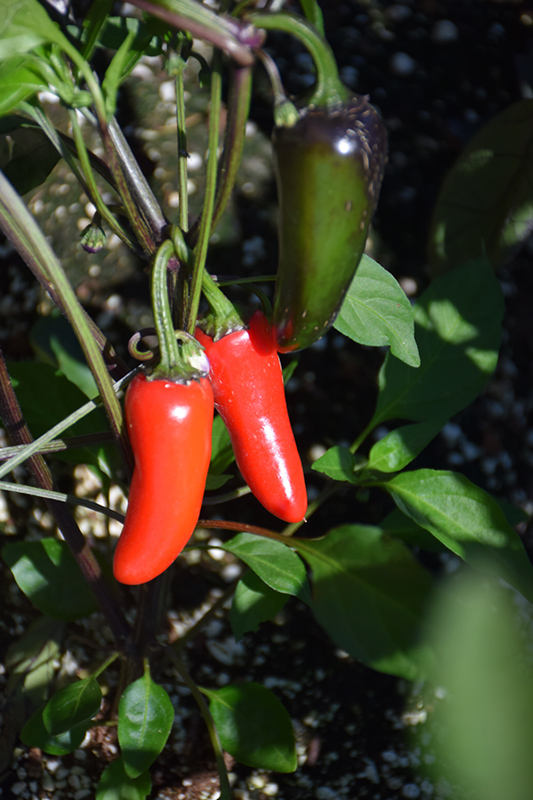Count Dracula Hot Pepper
Capsicum annuum 'Count Dracula'
Height: 24 inches
Spacing: 18 inches
Sunlight:
![]()
Hardiness Zone: (annual)
Group/Class: Ornamental
Description:
A visually stunning ornamental, this variety features black foliage along with black fruit that ripens to blood red; perfect for gardens or patio containers; peppers are edible but not recommended
Edible Qualities
Count Dracula Hot Pepper is an annual vegetable plant that is typically grown for its edible qualities, although it does have ornamental merits as well. It produces small red oblong peppers (which are technically 'berries') with red flesh which are typically harvested when mature. The peppers have a fiery taste and a crunchy texture.
The peppers are most often used in the following ways:
- Eating When Cooked/Prepared
- Cooking
Planting & Growing
Count Dracula Hot Pepper will grow to be about 24 inches tall at maturity, with a spread of 18 inches. When planted in rows, individual plants should be spaced approximately 18 inches apart. This vegetable plant is an annual, which means that it will grow for one season in your garden and then die after producing a crop.
This plant is quite ornamental as well as edible, and is as much at home in a landscape or flower garden as it is in a designated vegetable garden. It should only be grown in full sunlight. It does best in average to evenly moist conditions, but will not tolerate standing water. It may require supplemental watering during periods of drought or extended heat. It is not particular as to soil type or pH. It is somewhat tolerant of urban pollution. This is a selected variety of a species not originally from North America.
Count Dracula Hot Pepper is a good choice for the vegetable garden, but it is also well-suited for use in outdoor pots and containers. With its upright habit of growth, it is best suited for use as a 'thriller' in the 'spiller-thriller-filler' container combination; plant it near the center of the pot, surrounded by smaller plants and those that spill over the edges. It is even sizeable enough that it can be grown alone in a suitable container. Note that when growing plants in outdoor containers and baskets, they may require more frequent waterings than they would in the yard or garden.

